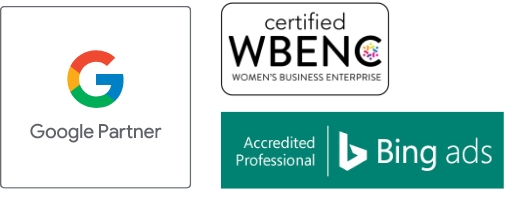
How to Make Virtual Client Communications Stand Out
The coronavirus pandemic has changed much about how financial institutions build client relationships and help prospects interact with their brands. The most significant change is the transition from in-person to virtual communication.
Virtual communications can be a poor substitute for the in-person greeting, handshake, or friendly chat that was a standby of relationship-building before the pandemic. Without face-to-face meetings, we lose visual cues that help guide successful, engaging conversations. Now, we rely entirely on virtual communications, which can feel shallow or unauthentic to clients and cause intentions to get lost in translation.
It is possible to maintain client relationships and build strong bonds with prospects virtually. You just need to use technology to your advantage and follow these four tips:
BE THOUGHTFUL & THOROUGH
Online communications can streamline productivity, but they can also come across as phony. Be thoughtful and thorough in your virtual communications:
- Simplify: Make sure your communications are simple and to the point. Organize each message around only a few key items. Everyone is overwhelmed today. Don’t add to the load with too much information.
- Increase Touchpoints: Check in with your clients and prospects more frequently. Lack of communication creates an “out of sight, out of mind” effect.
- Be Open: Be authentic in your communications by expressing emotions and thoughts (the more positive, the better). Listen to the challenges your members, customers, and prospects have, and work to provide solutions that meet their needs.
SHOW YOU CARE
Nothing fosters a sense of connectedness like showing care and concern. When people feel they are cared about, they are more likely to stay engaged with you and your brand. To show you care, practice these communication activities:
- Practice Random Acts of Kindness: In the real world, holding a door for someone or treating for a cup of coffee goes a long way in building a relationship. In the virtual world, you need to think differently. Try sending a motivational text, or email a funny meme to lend some encouragement or cheer. If you know the client well, send a special treat to their home.
- Give Helpful Support: When you help someone, you show you care. Help by taking a client’s survey, reposting a prospect’s tweet, or supporting a member’s online fundraiser. Unsure of how to help? Ask people what they need and how you can support them.
- Share Agenda-Free Communications: Every touchpoint you have with a member or prospect does not have to be about business. A friendly text, email, or voicemail saying you are just checking in to see how someone is doing goes a long way in genuinely showing you care.
BE RELEVANT
The key to effectively communicating with each of your clients and prospects is relevancy. Your communications need to be timely and sensitive to what each individual is experiencing. Every one of your clients and prospects has different needs in meeting their financial goals, and those goals may be affected almost day by day as the business and economic landscape evolves.
In a remote environment, being relevant starts with asking how you can help and what concerns are top of mind. From there, you can structure communications that are timely and sensitive. To increase relevancy in your virtual communications:
- Understand the Person: You need to ask questions and actively listen to understand what your clients or prospects need, what they are concerned with, and what their goals are.
- Understand Preferred Channels: Do you know how your contacts prefer to communicate? Some may be more responsive to a phone call. Others may want email communications or a video conference. Communicating via preferred channels increases your relevancy.
BE RELATABLE
In the past, you could encounter a member or prospect walking down the street, enjoying a ball game, or running errands. Those personal meet-ups are less likely to happen now. That means you need to work harder at being relatable. When your connections get to know you as a human (and not a voice at the end of the phone or a signature on an email), you gain their trust.
How can you do that in a virtual world? Actively listen then briefly share a personal tidbit that is relevant. For example, if your client shares that they are concerned that their college savings plan for their kids has gotten off-track, you could share that you are concerned about getting your kids through college too. Or, if a client shares that they missed their annual vacation to Maine, you could share a memory of your own Maine vacation or ask what they like best about that state.
There are numerous challenges to establishing and growing client relationships virtually. Mastering these tips can help you communicate more effectively and responsibly and humanize the digital experience.
Get the Most Out of Your Content Marketing Strategy
Whether you’re a national bank, community bank, or credit union that caters to a demographic with specific financial needs and concerns, the content marketing experts at Lightstream can help you develop a strategy that’s right for your organization. From developing engaging content to reaching the right audience with the right content and presenting it in the most effective way, we can help you maximize the impact of your marketing efforts. Think of it as an investment in growing your business.
